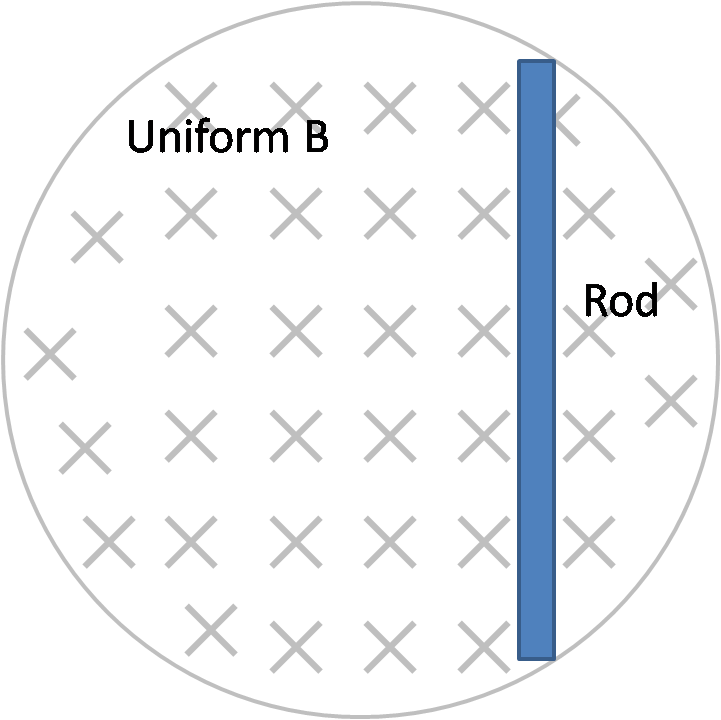As soon as we connect a voltmeter to measure the voltage we form a loop. The voltage that we read will be for the loop as a whole and the voltmeter will read positively or negatively according to whether it is placed to the left or right of the rod.
But, you might ask, suppose that we connect nothing to the rod: will one end of the rod acquire positive charge and the other negative (as do the terminals of a battery)? Yes indeed. We can calculate the resulting potential difference in this way...
Call the centre of the circular patch (in which there is a magnetic field changing at a rate $\dot B$), 'O'. Call the ends of the rod 'P' and 'Q', and its midpoint, 'M'. Write PQ$=l$, OM$=h$. Then the emf induced around triangle OPQ will be:
$$\mathscr E = \text{area of triangle OPQ}\times \dot B= \tfrac 12 lh\dot B.$$
However, there is no emf in either OP or QO, the radial sides of the triangle. Such emfs and their associated electric fields would, by symmetry, have to be radially outwards for all radii or radially inwards for all radii, and that is ruled out by Gauss's law, as there is no 'central' charge.
So the emf we have calculated will be induced along PQ. The emf will cause charges to move in the rod until the pd due to the charges is equal in magnitude to the emf (so that there is no net electric field in the rod). So...
$$\text{pd between ends of rod} =\tfrac 12 lh\dot B.$$
Note: treating the rod as part of the triangle OPQ was done just for convenience of calculation. It is not essential to choose the closed loop OPQ, nor indeed any closed loop. A more physically direct method is to use the result (obtainable from $\vec \nabla \times \vec E=-\frac{d\vec B}{dt}$, Stokes's theorem and symmetry) that at distance $r$ from O the electric field is tangential to a circle centred on O and of magnitude $E=\tfrac 12 r\dot B$. It is easy to show that the component of this field parallel to PQ is $E_\text{PQ}=\tfrac 12 h\dot B$ all along PQ, giving the same value for the emf induced in PQ as calculated earlier!

